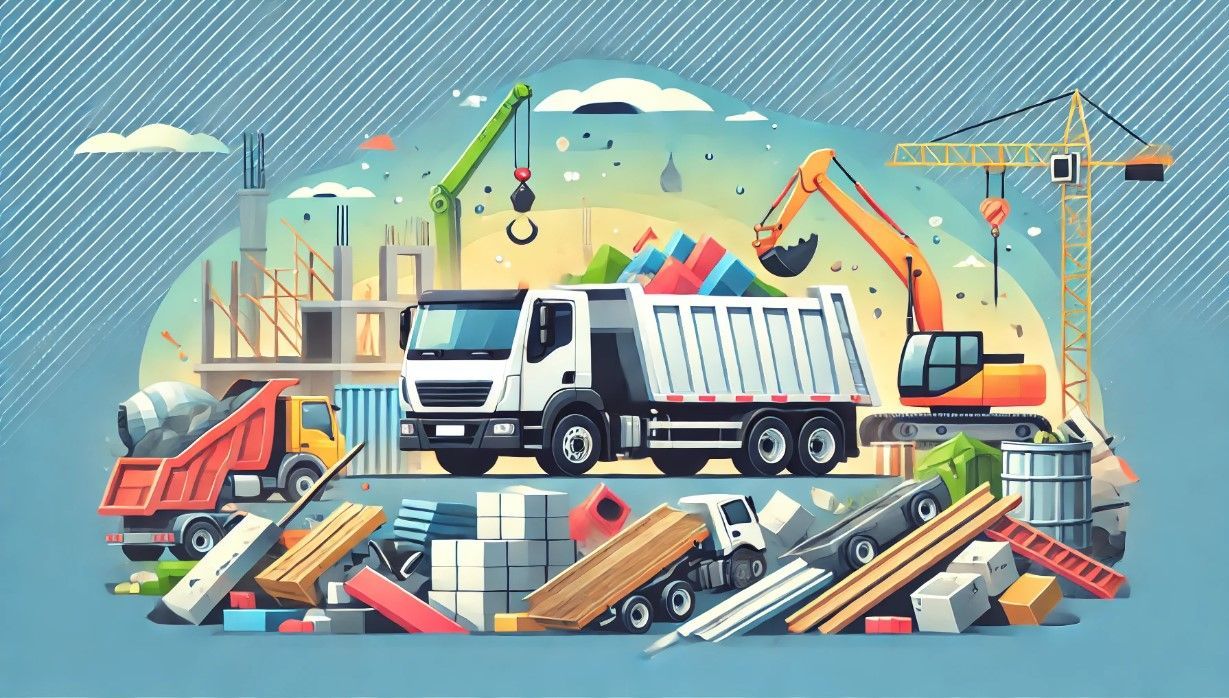Effective Construction Debris Removal for a Cleaner Site
Construction projects are all about building something new, but they also create a lot of debris. Whether you’re renovating a home, working on a commercial project, or doing major landscaping, construction debris can pile up quickly. Efficient construction debris removal not only keeps your job site clean but also ensures safety and smooth progress. In this guide, we’ll discuss how to manage construction debris, best practices for disposal, and why professional removal services can make your life a lot easier.
What is Construction Debris Removal?
Construction debris removal is the process of clearing waste materials generated during construction, renovation, or demolition projects. This debris can include a variety of materials such as concrete, wood, drywall, metal, bricks, and insulation. Proper disposal is essential not only for site cleanliness but also for safety, environmental impact, and legal compliance.
Why Construction Debris Removal is Important
- Safety First: Piles of debris can be hazardous for workers, causing trips, falls, or injuries from sharp objects. Proper removal ensures a safer work environment.
- Increases Site Efficiency: A clean worksite is a more efficient worksite. Debris removal allows workers to move around easily and access materials without obstruction.
- Environmentally Friendly: Responsible disposal and recycling of construction materials help minimize the environmental impact.
- Meets Legal Requirements: Depending on your location, there are often laws regulating how construction waste should be disposed of. Failing to comply can result in fines and delays.
Types of Construction Debris
Construction sites can produce a wide range of waste. Here's a breakdown of common debris types and how they should be handled:
| Type of Debris | Examples | Disposal Method |
|---|---|---|
| Concrete and Asphalt | Concrete chunks, asphalt paving | Recycle or reuse for other projects |
| Wood | Pallets, lumber scraps, plywood | Recycle, reuse, or donate |
| Metal | Steel, aluminum, copper pipes | Recycle at scrap yards |
| Drywall and Insulation | Gypsum board, foam, fiberglass insulation | Recycle or dispose of in landfill |
| Mixed Debris | Tiles, bricks, roofing shingles | Separate and dispose of accordingly |
| Hazardous Materials | Paint, asbestos, treated wood | Special disposal at hazardous waste facilities |
Tip: Separate materials into different piles or bins as you go. This makes disposal easier and helps ensure proper recycling and waste management.
Steps for Effective Construction Debris Removal
1. Assess the Scope of the Debris
Understand what materials need to be removed, how much there is, and if any of it is hazardous. This will help you determine the right disposal method and whether you need professional help.
2. Create a Debris Management Plan
Plan ahead by identifying the types of materials you'll be dealing with and how they will be disposed of. Consider the following:
- Will materials be recycled, reused, or thrown away?
- Do any items need special disposal, like hazardous waste?
- Is there a need for on-site dumpsters or bins for easy collection?
3. Choose a Disposal Method
Your options for debris removal will typically fall into these categories:
- On-Site Dumpsters: Perfect for collecting debris as it is generated. Ensure you have separate bins for recyclables, trash, and hazardous materials.
- Roll-Off Containers: Large, open-topped dumpsters that can be rented and placed on-site for easy debris disposal.
- Haul-Away Services: Hire a professional debris removal company to collect, sort, and dispose of the debris for you. They can take care of recycling and ensure legal compliance.
4. Sort and Recycle
Before dumping everything into a single pile, take the time to sort debris based on recyclability. For example:
- Concrete and bricks can often be recycled for road construction or landscaping.
- Metals should be taken to a scrap yard for recycling.
- Wood can be repurposed or chipped into mulch.
5. Dispose of Hazardous Materials Safely
Items like paint, asbestos, treated wood, and chemicals are considered hazardous and require special handling. Always contact your local waste management service for guidance on the safe disposal of hazardous materials.
6. Schedule Regular Debris Pickups
Don't wait until the end of your project to remove debris. Regular pickups help maintain a clean and safe site, and they can be scheduled as needed to prevent the buildup of waste.
Benefits of Hiring a Professional Debris Removal Service
- Time and Labor Saving: Hiring professionals means you don't have to worry about heavy lifting, sorting, or transportation.
- Environmentally Responsible Disposal: Professional services often know how to recycle materials properly and reduce the environmental impact.
- Compliance with Regulations: A professional debris removal company understands local waste laws and ensures that all disposal is compliant.
- Safety: Trained professionals have the right equipment and experience to remove even hazardous or large debris safely.
FAQs on Construction Debris Removal
Q1: How much does construction debris removal cost?
A: Costs vary depending on the volume and type of debris, your location, and whether you choose to DIY or hire professionals. Renting a dumpster may cost anywhere from $200 to $500, while professional removal services can range from $300 to $1,000+ based on the job size.
Q2: Can all construction debris be recycled?
A: Not all materials are recyclable. For instance, concrete, metal, and clean wood can often be recycled, but materials like treated wood, certain types of insulation, and mixed debris may need to be sent to a landfill.
Q3: How do I know if my debris is hazardous?
A: Hazardous materials often include paint, asbestos, treated wood, certain adhesives, and chemicals. If you're unsure, contact your local waste management service for guidance on safe disposal.
Q4: What size dumpster do I need for my project?
A: The dumpster size depends on the scale of your project. For small projects (like bathroom remodels), a 10-yard dumpster may be sufficient. For larger projects (like home renovations), a 20 to 30-yard dumpster is often required.
Tips for a Successful Construction Debris Removal Process
- Schedule Debris Pickups in Advance: Plan regular pickups or a final removal date before your project begins to avoid scheduling issues.
- Train Your Crew on Proper Sorting: Make sure everyone on-site knows how to sort and dispose of materials correctly.
- Keep Walkways Clear: Ensure debris is collected in designated areas to keep pathways clear for workers and prevent accidents.
- Rent the Right Equipment: Use equipment like wheelbarrows or hand trucks to easily transport heavy debris to dumpsters or containers.
Sustainable Practices in Construction Debris Removal
Sustainability is an important aspect of debris removal. Here are a few ways to reduce your project's environmental impact:
- Reuse Materials On-Site: If possible, reuse bricks, tiles, or wood for other aspects of the construction project.
- Recycle Where You Can: Ensure materials like metal, cardboard, and concrete are sent to recycling facilities.
- Consider Donating: Some materials, like clean wood, furniture, or working appliances, can be donated to non-profits, saving them from landfill waste.
Keep Your Site Clean and Safe
Managing construction debris removal effectively is a vital part of any building project. Whether you opt for DIY disposal or hire a professional service, ensuring the proper handling of waste will lead to a safer, more efficient, and environmentally friendly job site. Have a story or tip about handling construction debris? Share your experience in the comments below!


